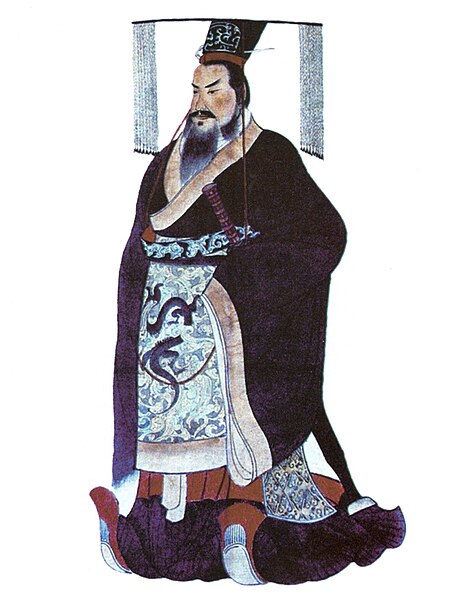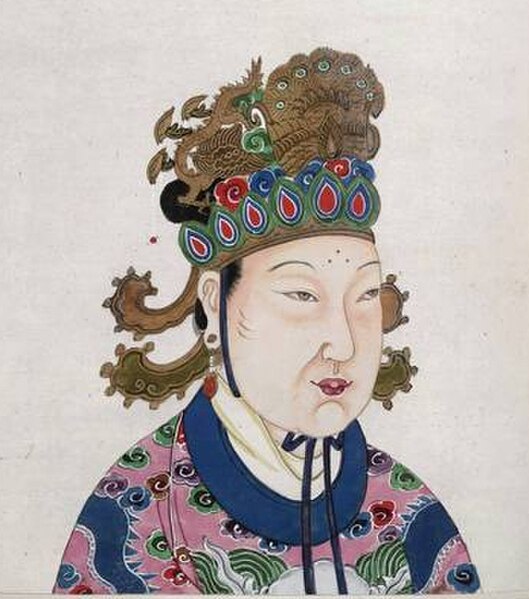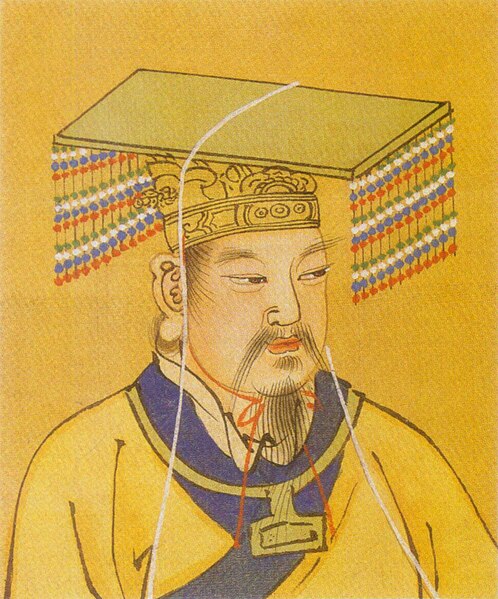Emperor Guangwu of Han, born Liu Xiu (劉秀), courtesy name Wenshu (文叔), was a Chinese monarch. He served as an emperor of the Han dynasty by restoring the dynasty in AD 25, thus founding the Eastern Han dynasty. He ruled over parts of China at first since his dynasty was formed through rebellion against the short-lived Xin dynasty, and through suppression and conquest of regional warlords, the whole of China proper was consolidated by the time of his death in AD 57. During his reign, Taoism was made the official religion of China, and the Chinese folk religion began to decline.
Emperor Guangwu, as depicted by the Tang artist Yan Liben (600–673)
Eastern Han bronze chariot and cavalry figurines excavated from a tomb
An Eastern Han (25 AD-220 AD) mural showing a procession of chariots and cavalry, from the Dahuting Tomb of Zhengzhou, Henan province, China
An Eastern Han (25 AD-220 AD) Chinese ceramic figurine of a soldier with a missing spear
Throughout Chinese history, "Emperor" was the superlative title held by the monarchs who ruled various imperial dynasties. In traditional Chinese political theory, the emperor was the "Son of Heaven", an autocrat with the divine mandate right to rule all under Heaven. Emperors were worshiped posthumously under an imperial cult. The lineage of emperors descended from a paternal family line constituted a dynasty, and succession in most cases theoretically followed agnatic primogeniture.
Qin Shi Huang, the first emperor of China (r. 221–210 BC)
Qin Shi Huang escaping assassination (3rd century AD)
An 18th century depiction of Wu Zetian, the only female emperor of China
Yellow Emperor








